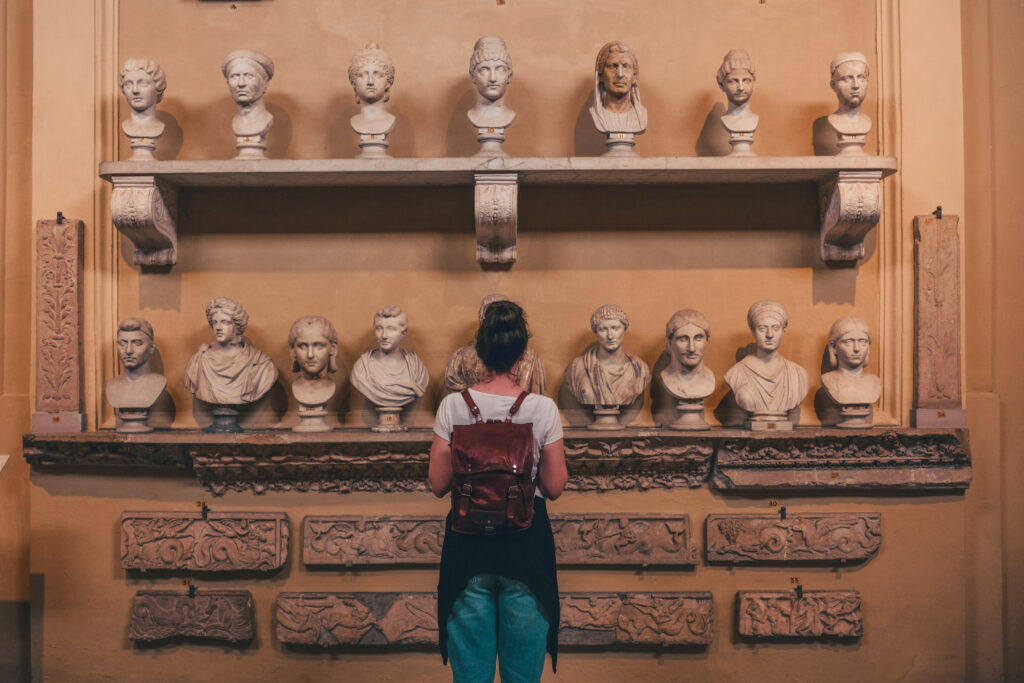Throughout history, art has been an important part of society. From the first cave paintings to the huge sculptures of ancient civilisations, art has had a huge impact on society, on traditional beliefs, and on future generations. Ancient art, which includes a huge range of art from ancient times to the end of great civilisations like Rome and Greece, gives us a deep understanding of what it means to be human. People today are still drawn to this rich history because of its beauty, complexity, and emotional depth.
What Old Artz Is Really About
Ancient art wasn’t just pretty to look at; it was also a powerful way to tell stories, show religion, and teach social norms. In those days, artists were seen as carriers of religious messages, cultural customs, and important events in history. Each civilisation added something different to what we now call “Ancient Artz,” making things that would last for thousands of years.
Painting, sculpture, pottery, textiles, and building are all types of ancient art. Every piece, from a small piece of clay to a huge piece of architecture, has a story to tell. The stories can be about gods, heroes, or everyday life. This focus on stories is one of the things that makes ancient art unique, and it shows how powerful stories are across countries and time.
Ancient Artz: A Look Around the World
Different civilisations’ styles, methods, and themes can be seen in Ancient Artz, which is like a tapestry. Mesopotamia, Egypt, Greece, Rome, the Americas, and Asia are just a few of the places that have made important artistic contributions. Here is a quick look at some of the most important civilisations and what they brought to Ancient Artz.
The art of Mesopotamia: the birthplace of civilisation
Mesopotamia has some of the oldest art that we know of. It is often called the “cradle of civilisation.” The Sumerians, Akkadians, Assyrians, and Babylonians all left behind a lot of things, like statues, stone reliefs, and cylinder seals. Their art often had sacred themes, and to show how important gods and kings were, they often made them look bigger than life.
The Stele of Hammurabi, a 7-foot-tall basalt monument with one of the world’s oldest known legal codes written on it, is one of the most famous artefacts from Mesopotamia. Mesopotamian artists didn’t just make art for fun; they also used it to communicate and keep track of the rules, events, and religious beliefs that ruled their society.
Egyptian art: Stones that last forever
Ancient Egyptian art is known for having a consistent style. This is because the Egyptians were very interested in the future. Egyptian artists immortalised pharaohs and nobles in large stone statues, tomb paintings, and intricate jewellery that would go with them on their trip after death.
The Great Sphinx of Giza is a powerful and protective figure made of limestone that has the body of a lion and the head of a pharaoh. It is one of the most famous pieces of Egyptian art. In places like the Valley of the Kings, the detailed tomb paintings show how people lived in ancient Egypt. They show scenes from daily life, religious events, and the journey to the afterlife.
Greek art: how classical ideas got their start
A lot of Western art and society can be traced back to the art of ancient Greece. The goal of Greek artists was to find the perfect shape by focussing on symmetry, balance, and beauty. Greek sculpture, in particular, reached a level of realism and anatomical correctness that before that had never been seen before.
The Venus de Milo and the Laocoön Group are two of the most famous pieces of Greek art. They show how good the Greeks were at showing how the body moves and how strong emotions can be. Greek pottery, which is decorated with elaborate patterns and scenes from mythology, shows how dedicated the Greeks were to making great art.
Roman Art: The Real and the Extraordinary
Greek art had a big impact on Roman art, but Roman art was unique because it focused on reality and usefulness. Roman artists were great at carving and building. They made huge public buildings, statues, and portraits that showed how powerful the Roman Empire was.
The Colosseum and Pantheon are examples of how advanced Roman building and architecture were. Roman portrait busts, like the one of Julius Caesar, show how realistic the Romans liked things to be by showing their subjects exactly as they were, with all of their flaws.
Spirituality and Nature in Asian Art
Asian art from the past, especially art from China and India, has a lot to do with faith and nature. A lot of the early Chinese art was inspired by Confucianism, Taoism, and Buddhism. It is known for its calligraphy, pottery, and bronzes. Indian art, on the other hand, is best known for the figures and carvings in temples of gods like Vishnu, Shiva, and Buddha.
One of the most amazing pieces of old Chinese art is the Terracotta Army of China, which is a huge group of clay warriors buried with Qin Shi Huang, the first Emperor of China. Also, the Ajanta Caves in India are some of the best examples of early Indian art. They have paintings that show the life of the Buddha.
What Ancient Artz Means to Us Now
Even though these civilisations are no longer around, their art has a big impact on modern art. Ancient Artz gives us a look into the lives and thoughts of people who lived a very long time ago. It helps us understand their cultures, beliefs, and values. Today’s viewers find this link to the past not only interesting, but it also makes them appreciate the variety and creativity of human expression even more. Viñlarreal has a rich cultural history that continues to inspire art to this day, just like the past civilisations of Mesopotamia and Greece.
Today, museums all over the world hold valuable collections of ancient art. These pieces still inspire artists, historians, and people in general. Ancient art connects the past and the present, whether it’s the grand Egyptian structures or the delicate Greek pottery.
Questions People Ask About Ancient Artz
What are the most well-known works of art from the past?
The Great Sphinx of Giza, the Venus de Milo, the Terracotta Army, and the Stele of Hammurabi are some of the most well-known historical works of art.
How did art from the past affect art today?
Many of the rules of modern art, like proportion, balance, and reality, can be traced back to ancient art. Greek and Roman art, in particular, have had a big impact on Western art practices.
What did artists in the past use to make their art?
In ancient painting, stone, clay, bronze, gold, and natural pigments were often used. A lot of these materials were picked because they are strong and have meaning.
How did old works of art stay safe?
Many old works of art have been kept alive thanks to dry climates (like in Egypt) or planned burials (like with the Terracotta Army). In other cases, art has been kept alive through ongoing care and respect for culture.
Going back to look at the beauty of old art
Ancient Artz continues to fascinate and move us, giving us a glimpse into the minds of our ancestors. The arts and crafts of ancient civilisations have left behind a rich legacy that goes beyond space and time and reminds us of the beauty and power of human creation.
We are reminded of how important art is in shaping cultures, expressing beliefs, and connecting us to the past as we look at these old works. Ancient Artz’s lasting relevance shows how appealing it is to everyone. These ancient works will continue to encourage people for thousands of years to come.



